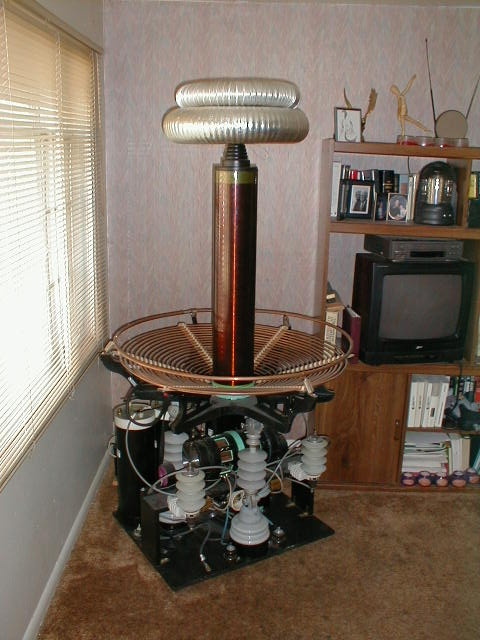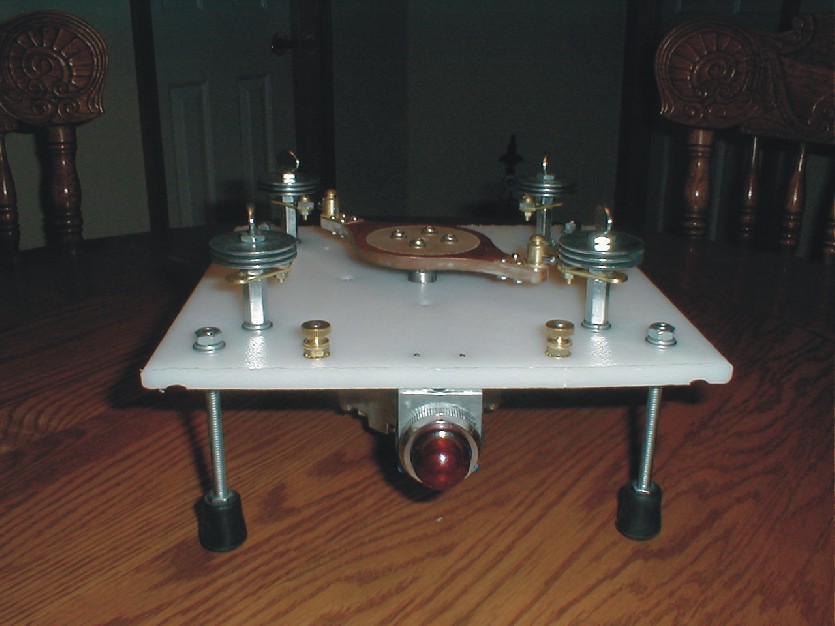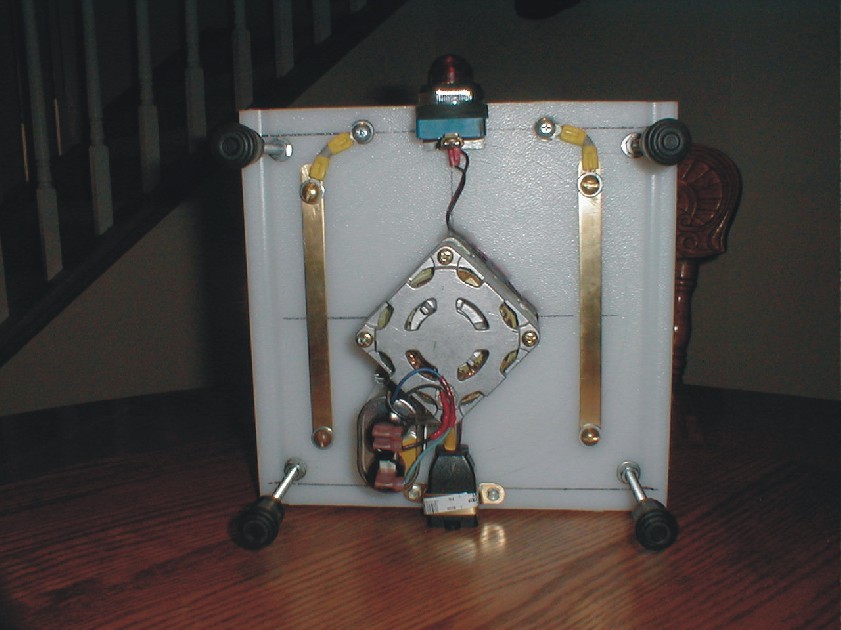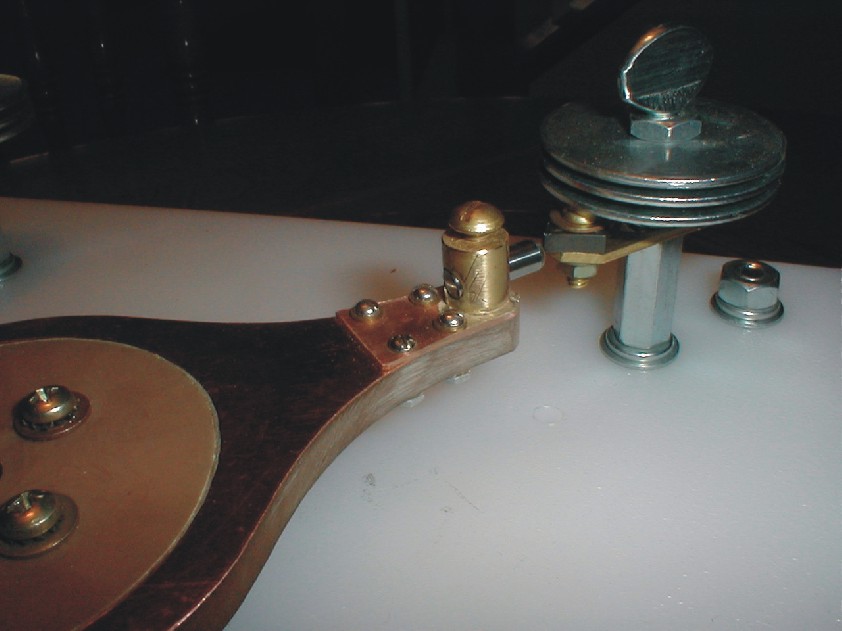![]()
The primary coil is made from 5/16" copper tubing with 18 turns currently
tapped at turn 10. The secondary is made from 6" green PVC with approximately
995 turns of 22ga. magnet wire. It is space wound for the top two inches with
50lb. test monofilament fishing line. The secondary is capped on both ends
with 1/4" plexilgass and a 1 1/2 X 3 inch piece of copper sheet inserted into
the bottom of the coil so that it will plug into a mount on the primary coil.
The coil is an equadrive system with four rolled poly (Richard Quick/ TCBOR)
capacitors. They are supposed to be .02mfd but I think that they only test
to .017mfd. There are two caps in parallel on each end of the primary coil
for a total primary capacitance of .017mfd.
The gap is two RQ/ TCBOR series gaps using 1 1/2 inch copper pipe with 7
electrodes at .028" gap. Instead of the fans blowing over the electrodes I cut
out holes above each gap, sealed the ends with sheet mica and put two high volume fans
drawing air through the gaps...vacuum gap. .336" total gap. I am using 1
1/4 inch heavy braided flat insulated copper tape/strap attached to the
cast iron sewer pipe under the apartment for high frequency ground.
For NST
protection there are two chokes on three inch ferrite cores, two sets of two
parallel 50 watt resistors and a safety gap. There are no bypass caps. I
also have two line pole type 10Kv lightning arrestors. I don't know whether
they would actually do anything but they look cool. The toroid is four
inch black flexible drain pipe 20 inches in diameter. The new untested
toroid is eight inch aluminum drier duct 36" in diameter. With the old
toroid and 12Kv .150ma of NST I was getting 47" multiple streamers. I am
working on removing some shunts from a 12Kv .120ma unit to use with the
other NST's (1-12/.060, 3-12/.030's). Inductances, K and Q factors etc. I
have no idea. I believe that I figured all of that out in the beginning so
that I could figure out capacitance and such but I don't remember and didn't
make any notes. The newly inspired Terry Blake small asynchronous motor
spark gap will go with the larger toroid and the rebuilt 12/......150ma?
NST for the next round of testing and tuning.


I had actually quit coiling four years ago as my project got TOO BIG for my
apartment. I thought that I would move and have a garage...I'm still in the
same place. It's too cold to work on my truck and in my need to build
something I started working on the coil again. I decided that my only
neighbor is usually intoxicated so if the streamers go through the walls
it's OK. I wanted to improve the gap and add some more power was where I
left off. I didn't want to roll more poly and oil caps and thought that I
would need to go to a potential transformer or a pole pig for more power.
I have found it really amazing that coiling is still evolving. People are
using MOT's, MMC's, triggered spark gaps etc. This is all new stuff to me.
I found your page using small sync. motors and your original idea of a
lightweight rotor and multiple stationary electrodes. I had tried filing
flats on a 1/2hp motor I bought and ruined the motor.
I used a scroll saw to cut the G10 for the rotor and a belt sander to finish
shaping it. I haven't fired the gap yet. I am working on an unpotted
12/120 to add to the NST farm for 3200 watts. Feel free to post the
pictures if you want. I attached a picture of my coil before I quit working
on it. The insulators were free from the City Public Salvage.
I was so impressed with your rotary gaps that I made my own...maybe a bit
over engineered. The stationary electrodes are carbide lathe bit inserts
that I get from work. The rotary electrodes are 3/16 carbide cutter blanks
that I use in die sinking. The rotor is heavy copper on both sides of G10
circuit board. The motor is a American Science and Surplus 22602 Shinano
Tokki motor. I just wanted to thank you for providing the necessary
information to build my gap and for the GREAT web site!



Kent Tinsley
toyhatsu@pcisys.net
![]()